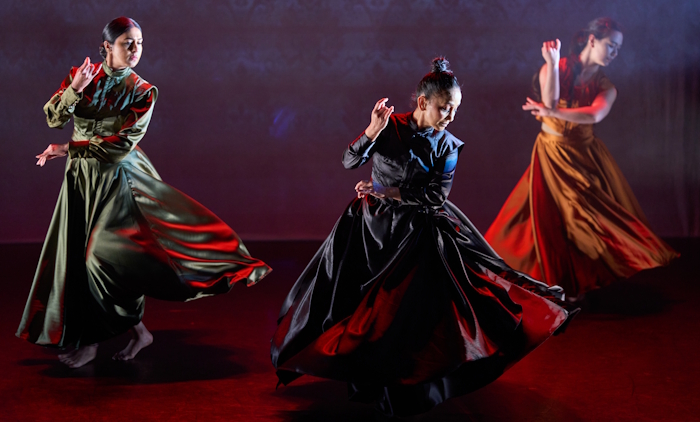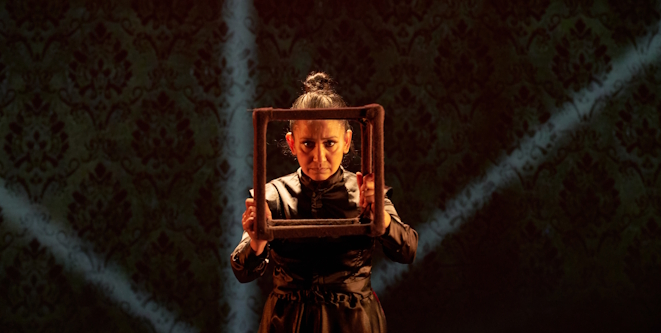The Place, London
November 4, 2025
A new work from kathak dance theatre choreographer Amina Khayyam, Bibi Rukiya’s Reckless Daughter continues her tackling of taboos and hard-hitting subjects. This time, she turns her attention to how women impose thoughts of what is ‘correct’ on other women and how they perpetuate the same, often patriarchal, cultural expectations they suffered themselves; expectations at odds with a desire for personal freedom. In doing so, she inevitably reveals the complexities and tensions of family relationships.
Khayyam sets her story in a contemporary community where cultural traditions are strong, using kathak to tell the story of Bibi Rukiya, who has confined her three daughters to secure their marriages and maintain family honour and reputation. Although loosely based on Federico García Lorca’s play The House of Bernarda Alba, the story of five daughters who find themselves under the thumb of a widowed mother, it has strong roots in an extensive programme of workshops with women’s community groups in which the participants explored their real-life experiences.
The work has just four dancers, the four members of the household. The characters are all recognisable, if rather drawn with not too much depth or detail. Led by Khayyam as Bibi Rukiya, they initially dance in unison. But the cracks soon appear. Particularly apparent is the disillusionment felt by the youngest daughter, who starts to rebel. And the more her mother tries to rein her in, the more you sense she is determined to find freedom.
At the other end of the scale, there’s the eldest daughter, unhappy but feeling she should follow her mother; and caught in the middle, not quite knowing which way to turn, but leaning towards her younger sibling, the second child.
Although she pulls them back into dances they do not want to be part of, as the mother, Khayyam tends to be a little in the background. In a way, like the pressures to conform, omnipresent without being overly overt. That in itself causes a simmering, if gentler than one might think, tension.
The choreography for the sisters depicts the struggles they face. We see the rebellious youngest in particular stamp in defiance. Her aggressive dance a contrast to the softer movement elsewhere. A conversation between the three daughters that’s a sort of dialogue in rhythm is well staged, although detail is harder to discern.
As ever with Amina Khayyam, the music, like the dancing, is quite superb. Composed by John-Marc Gowans and played live by Debasish Mukherjee (tabla) and Natalie Rozario (cello), with vocals from Sohini Alam, it adds layers to the work. Keith Khan and Abeda Begum’s vibrant costumes likewise.
While Khayyam certainly raises awareness of her subject, it is easy to argue that she should have gone further. Ultimately, Bibi Rukiya’s Reckless Daughter left me somewhat conflicted. I wanted to know more about the characters. I wished its depictions had been a little stronger.
But the pulling back of the curtain on a topic is often an important start in itself. Sometimes we need to be shown what is happening to actually realise it. Khayyam does present a picture of ‘what is’ rather than asking ‘why,’ and in particular, why women continue to perpetuate the state of affairs. But the act of revealing is an important first step, and one that she takes with sensitivity. For some, I suspect this is a tricky subject, one that even starting to tackle might prove alienating. Bibi Rukiya’s Wayward Daughter certainly does not do that.



